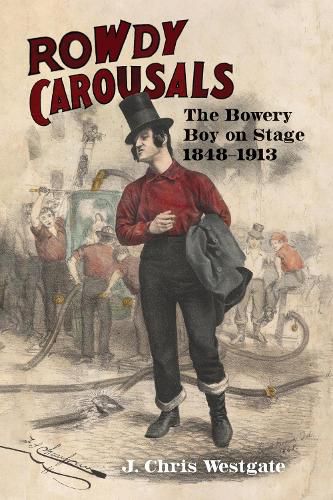Readings Newsletter
Become a Readings Member to make your shopping experience even easier.
Sign in or sign up for free!
You’re not far away from qualifying for FREE standard shipping within Australia
You’ve qualified for FREE standard shipping within Australia
The cart is loading…






Rowdy Carousals makes important interventions in nineteenth-century theatre history with regard to the Bowery Boy, a raucous, white, urban character most famously exemplified by Mose from A Glance at New York in 1848. Theatrical representations of the Bowery Boy emphasized the privileges of whiteness against nonwhite workers including enslaved and free African Americans during the Antebellum Period, an articulation of white superiority that continued through the early twentieth century with Jewish, Italian, and Chinese immigrants.
The book's examination of working-class whiteness on stage, in the theatre, and in print culture invites theatre historians and critics to check the impulse to downplay or ignore questions about race and ethnicity in discussion of the Bowery Boy. J. Chris Westgate further explores links between the Bowery Boy's rowdyism in the nineteenth century and the resurgence of white supremacy in the early twenty-first century.
$9.00 standard shipping within Australia
FREE standard shipping within Australia for orders over $100.00
Express & International shipping calculated at checkout
Rowdy Carousals makes important interventions in nineteenth-century theatre history with regard to the Bowery Boy, a raucous, white, urban character most famously exemplified by Mose from A Glance at New York in 1848. Theatrical representations of the Bowery Boy emphasized the privileges of whiteness against nonwhite workers including enslaved and free African Americans during the Antebellum Period, an articulation of white superiority that continued through the early twentieth century with Jewish, Italian, and Chinese immigrants.
The book's examination of working-class whiteness on stage, in the theatre, and in print culture invites theatre historians and critics to check the impulse to downplay or ignore questions about race and ethnicity in discussion of the Bowery Boy. J. Chris Westgate further explores links between the Bowery Boy's rowdyism in the nineteenth century and the resurgence of white supremacy in the early twenty-first century.